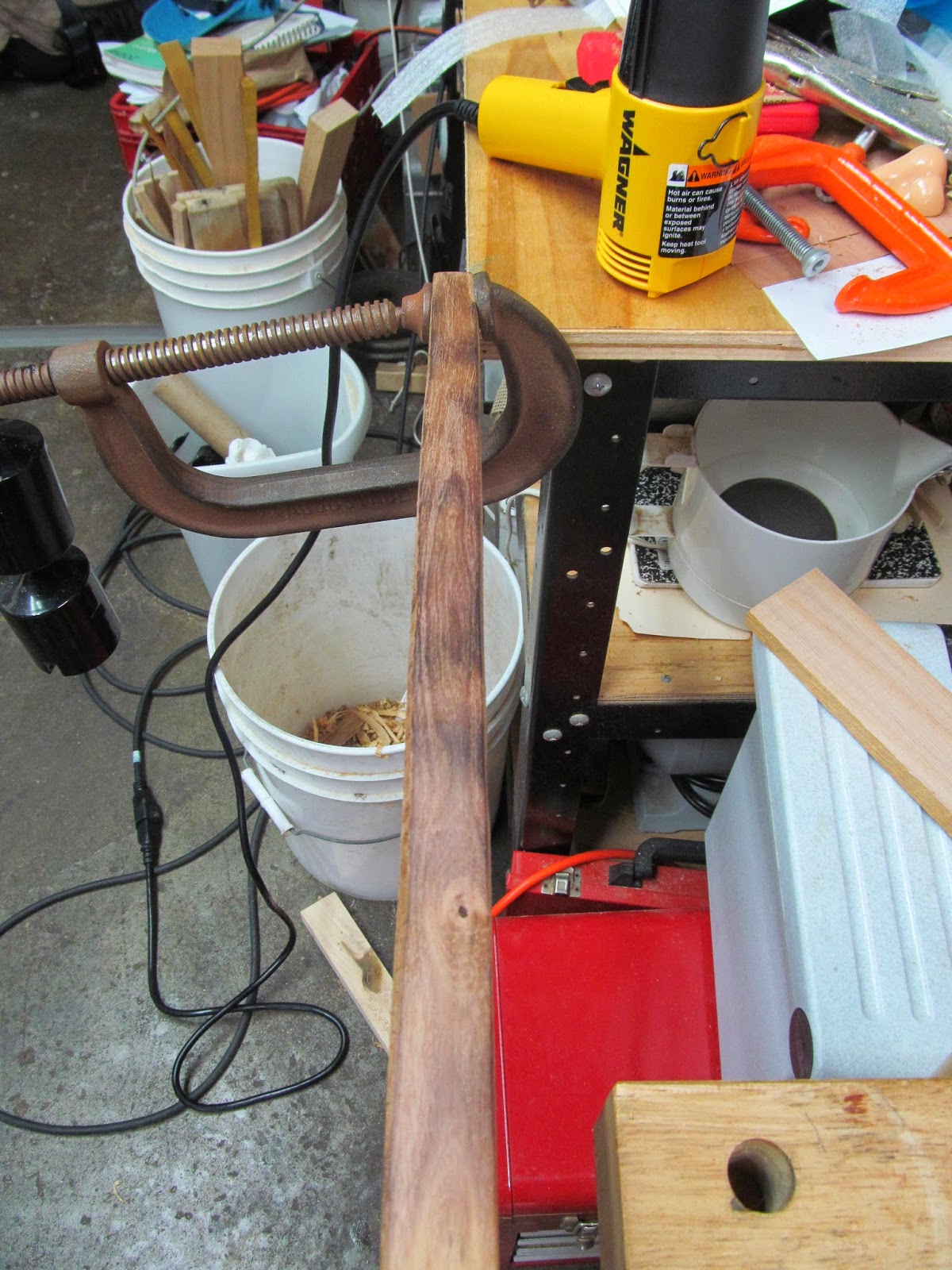Not a lot of pictures for this one... I guess I got caught up in actually doing rather than documenting!
At this point I'm heat treating the limbs for a few reasons:
1. To pull the twist out of the tips of the stave.
By using clamps and weights to create a lever to twist the limb in the desired direction, it is possible to take out some of the twist at the tips. I use the approach of not forcing the limbs against a form. Rather, by using the clamp and weights levered out at the end, the tips are gently coaxed into position as the wood is heated and relaxes. The trick is to try and coax them a little beyond where one wants them eventually, as some of the wood has memory and springs back a little bit. One can see the clamp and the weights in the picture below.
2. To try and add a little bit of reflex into the stave, as it is fairly straight limbed and slightly deflexed in areas.
I know that adding reflex can make a bow more difficult to tiller, but I'm not anticipating adding much: just enough to help make up for some of the inevitable string follow that will happen. As the bow takes set from being worked in, the limbs will start to bend toward the archer. If I can give the bow a little reflexing, the degree of string follow will be diminished in the finished bow (though the amount of string follow may be the same -- it just starts from a different place). Consequently, performance should go up, albeit only slightly.
3. To try and create a little more performance by altering the belly wood.
Heating the wood on the belly, tempers it and makes it more resistant to compressive forces, which can also slightly increase performance by two means: 1) increasing the draw weight per overall mass or allowing a lower mass for a given draw weight, and 2) forcing the belly to do more work. For the latter, wood is usually stronger in tension than in compression, so having the belly do a little more work can help balance out the load bearing. One downside, though: I recognize that some of the effects of heat treating the belly will be diminished by the fact that the limbs are not at their final thickness, so some of the tempered parts of the belly will disappear under the rasp and scraper. Why not wait until later? I plan to back the bow with rawhide using hide glue, so I don't want to soften the glue with heat and have the backing come off. As with many things, bow building is a matter of compromises!

No comments:
Post a Comment